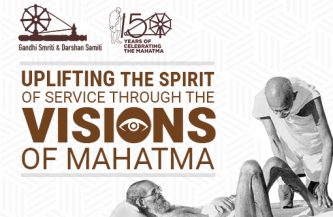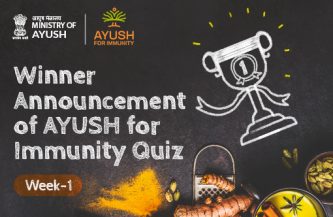Disaster Management Lessons of COVID-19

India has shown the way with innovative solutions– World Health Organization. But how?
Cases of Covid-19 first emerged in late 2019, when a mysterious illness was reported in Wuhan, China. The cause of the disease was soon confirmed as a new kind of coronavirus, and the infection has since spread to many countries around the world and become a pandemic.
As agreed by several experts, fighting battle with COVID pandemic is as big as World War II1. As mentioned by UN General Secretary, “We are facing a global health crisis unlike any in the 75-year history of the United Nations one that is killing people, spreading human suffering, and upending people’s lives”. This virus is spreading so fast that within 3 months after WHO’s precautionary announcement, total number of positive cases reached 1.8 Million while US alone reported 5lak cases. Most of the developed countries including US, UK , Germany struggling to contain it, India with population of 1.3 crore. With just one doctor per 1000 vs 3 doctors in developed countries controlling this Virus from rapid growth is not just uphill task but very critical too. Interestingly, India is still able to manage it at 6 cases per million against 1500 cases per million2 in US which makes it an interesting case study for disaster management.
As per WHO and CDC, COVID19 spreads mainly among people who come in close contact of less than 6feet with those who are already affected which can be achieved with lockdown especially for dense countries like India which itself is an uphill task. India’s journey of defeating COVID19 started from as early as Jan 8th with travel ban from Countries like China followed by multiple measures. “Janata Curfew” call by Prime Minister on March 22nd, 2020 will be remembered as the day of “Largest Social Experiment” in the world with participation of 1.3 Billion Indians which is equal to total population of entire Europe and US. This is further followed by #21DayLockDown, #9pm9Minutes. While it might be too early to say if India is successful due to its proactive measures , but we can confidently say that it helped to get time for preparation to handle possible widespread situation which is applauded by organizations like UN3, WHO4 and scored 100/100 points in Survey done by Oxford University5
5 Ps Disaster Management adapted by India
Proof of Concept with Social Experiment: –

As per WHO recommendation, “Social Distancing” is key for controlling COVID19. Achieving Social distance for a country with population of 1.3 billion can only be possible with complete lockdown which is not an easy task to enforce on public without proper experimentation and communication. Hence call for “Janata Curfew” by PM Modi, requesting entire country to voluntarily stay at home for 12 hours helped not just in understanding pain points prior to #21daylockdown but also gave an experience for public to make prior preparation which also caused very less disruption due to weekend. This is also clubbed with a call to #ApplauseforHealthWorkers , expressing gratitude by clapping from balconies is another successfactor of this social experiment which helped as reinforcer for #JantaCurfew. This was executed with very minimum resources from administration.
Proactive Approach: –

India is one of the first country for imposing international travel ban, screening of 1.5Million International passengers on arrivals and quarantine those with symptoms followed by #21DayLockDown. While initially it was criticized by experts due to economic repercussions, it got an acceptance globally and rest of the countries started following the same. This is applauded by experts from WHO and UN as proactive approach. holistic approach followed by government including Direct Benefit Transfer, support for immigrant labors, work from home opportunities and huge base of volunteers. As per the “statistical rate of growth-based analysis” by health ministry, cases could be projected to spiral to 8.2 lak by April 15th registering a 41% cumulative growth rate.
People Management: –

COVID impact is not limited to physical health of People but it is causing huge stress among people due to which there are some cases of even prominent people committing suicide or died of heart attack. PM Modi announced #9PMfor9Minutes Challenge on April 5th to turn off lights and lit lamps for 9 minute at 9pm as a mark of unity. As per Ministry of Power, they expected reduction of demand in power by 12GW but after this event they realized that demand reduced by 32GW, which proves overwhelming response by public for this challenge. As per the medical experts, lighting of lamp and standing for cause will help in destressing. Hence is another exercise by government which is executed at free of cost but gave best results.
Partnership: –

Regular interactions with all stakeholders, taking state government admins into confidence, discussions with peers like SAARC Countries, G20 groups helping for sharing knowledge, medical equipment’s empowering state governments etc., ensured that India is either self sufficient or exchange resources with peer countries. Proactive approach of India not just helped country in containing cases but also helping other countries by supplying one of the essential medicine HCE and PPE Kits. With Railways, Army, Ministry of Women Welfare also taking part in the mission of upgrading medical facilities, India might soon will be in a position to help other countries with medical services too.
Preparation and Collaboration: –

As there is no clear evidence if Lockdown and social distancing can help in containing COVID, proactive announcement of #21DayLockdown is clearly helping government for spikes in cases. During this lockdown period government is working on setting up COVID specialty hospitals, Isolation wards, procuring ventilators and PPE kits etc., India is well ahead of the curve in terms of preparation. For a country as large as India, the number one priority for the government continues to be a containment strategy – the lockdown, sealing off the red zones are some of the measures to stop the spread of the virus. To help in this, the Government of India also launched mobile app – ‘AarogyaSetu’, that is aimed at curbing the spread by effective tracking and monitoring of COVID-19 infected patients, regular updates, notifications and alerts from ‘Mygov.in’. ArogyaSetu app is appreciated as one of the innovative solution by WHO.
References :-
1. https://www.business-standard.com/article/pti-stories/covid19-pandemic-most-challenging-crisis-since-world-war-ii-un-chief-120040100323_1.html
2. https://www.worldometers.info/coronavirus/#countries
3. https://news.un.org/en/story/2020/03/1060132
4. https://tennews.in/india-scores-100-100-in-oxford-universitys-tracker-measuring-governments-response-to-covid-19/
[The blog is written by a MyGov user – Swapna Veldanda ]





